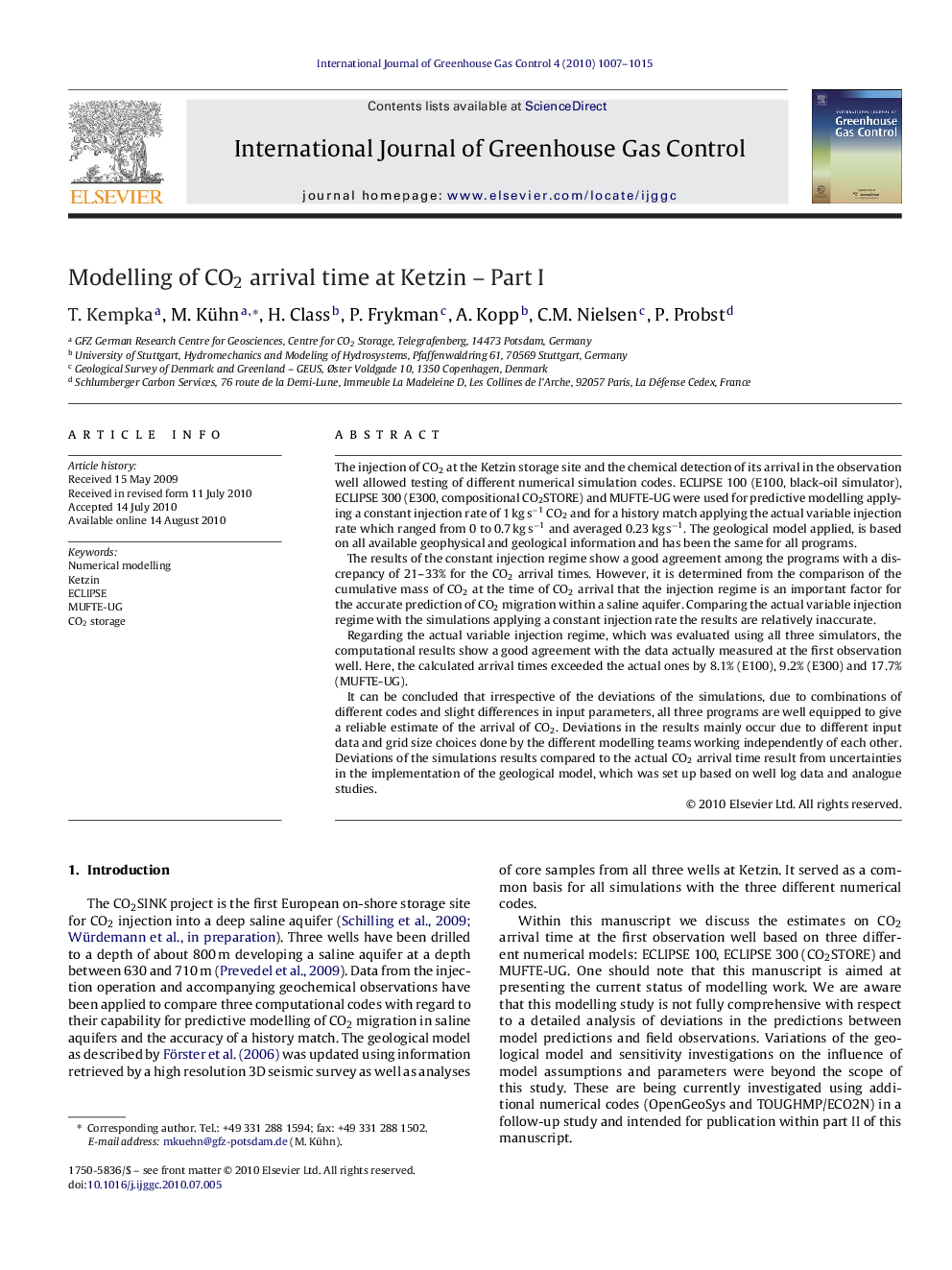| کد مقاله | کد نشریه | سال انتشار | مقاله انگلیسی | نسخه تمام متن |
|---|---|---|---|---|
| 1743597 | 1522025 | 2010 | 9 صفحه PDF | دانلود رایگان |

The injection of CO2 at the Ketzin storage site and the chemical detection of its arrival in the observation well allowed testing of different numerical simulation codes. ECLIPSE 100 (E100, black-oil simulator), ECLIPSE 300 (E300, compositional CO2STORE) and MUFTE-UG were used for predictive modelling applying a constant injection rate of 1 kg s−1 CO2 and for a history match applying the actual variable injection rate which ranged from 0 to 0.7 kg s−1 and averaged 0.23 kg s−1. The geological model applied, is based on all available geophysical and geological information and has been the same for all programs.The results of the constant injection regime show a good agreement among the programs with a discrepancy of 21–33% for the CO2 arrival times. However, it is determined from the comparison of the cumulative mass of CO2 at the time of CO2 arrival that the injection regime is an important factor for the accurate prediction of CO2 migration within a saline aquifer. Comparing the actual variable injection regime with the simulations applying a constant injection rate the results are relatively inaccurate.Regarding the actual variable injection regime, which was evaluated using all three simulators, the computational results show a good agreement with the data actually measured at the first observation well. Here, the calculated arrival times exceeded the actual ones by 8.1% (E100), 9.2% (E300) and 17.7% (MUFTE-UG).It can be concluded that irrespective of the deviations of the simulations, due to combinations of different codes and slight differences in input parameters, all three programs are well equipped to give a reliable estimate of the arrival of CO2. Deviations in the results mainly occur due to different input data and grid size choices done by the different modelling teams working independently of each other. Deviations of the simulations results compared to the actual CO2 arrival time result from uncertainties in the implementation of the geological model, which was set up based on well log data and analogue studies.
Journal: International Journal of Greenhouse Gas Control - Volume 4, Issue 6, December 2010, Pages 1007–1015